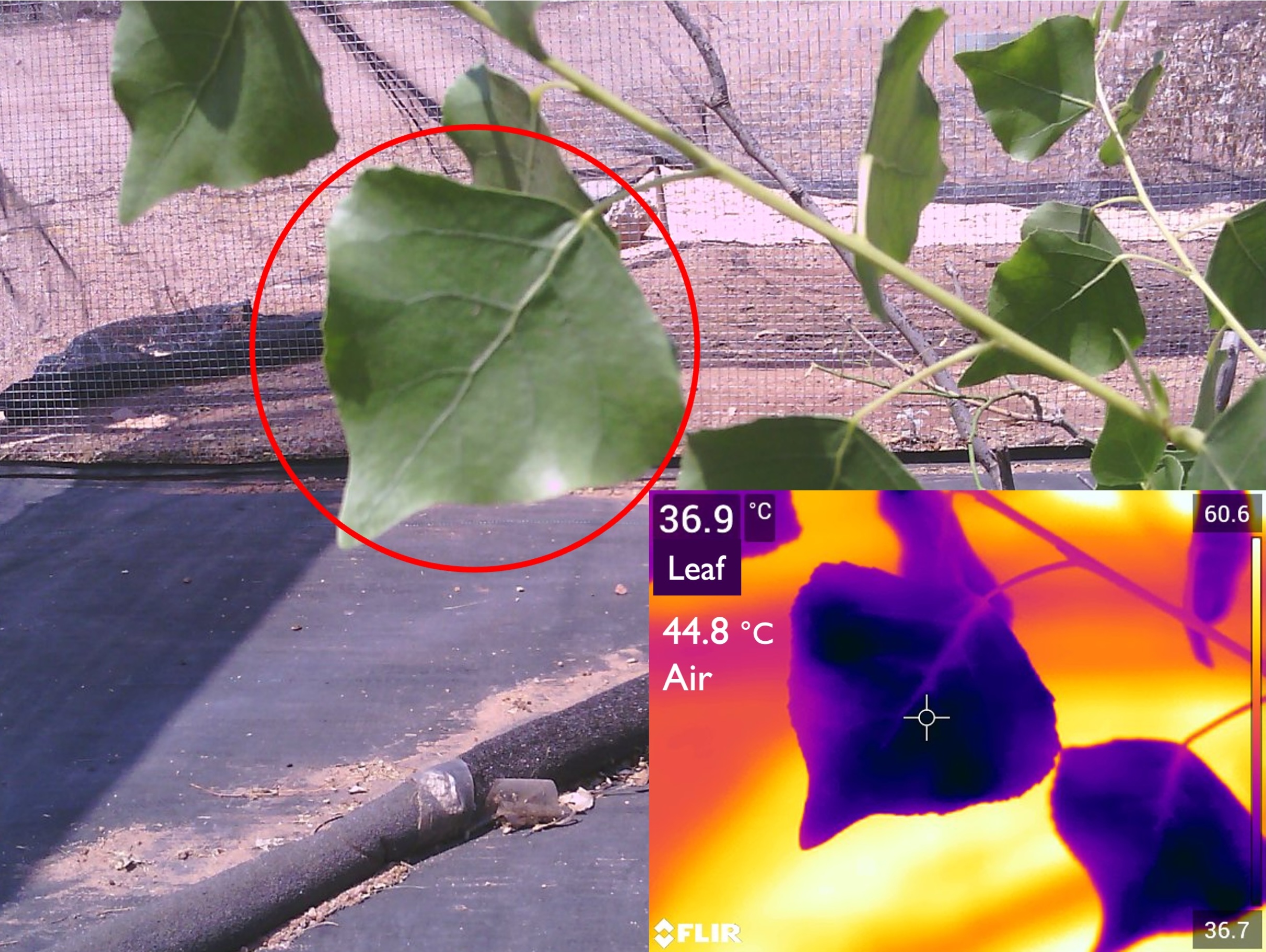A guest post by lead author and lab postdoc Brad Posch –
The summer of 2023 in Phoenix, AZ, was (at the time) the hottest ever recorded. But it’s not just in the southwest United States where record-breaking temperatures are becoming more common; heatwaves are increasingly longer, hotter, and occurring more often around the world. We leveraged this record heat to investigate its effects on the Fremont cottonwood (Populus fremontii), a widespread tree and model species for understanding the imminent threat that climate change poses to forests. Specifically, we focused on how water access affects leaf function and survival during extreme heatwaves.
Despite air temperatures exceeding 48 °C during our study, well-watered cottonwoods were highly efficient at cooling their leaves via maintaining high rates of leaf transpiration. However, leaf cooling collapsed following a brief disruption in soil water availability, resulting in leaf temperatures breaching critical damage thresholds. Ultimately, we observed a tradeoff between leaf thermal and hydraulic safety: cottonwood trees sourced from hotter climates maintained the coolest leaves during heatwave conditions, yet this came at the cost of a greater risk of leaf hydraulic failure. Our results show that the performance and survival of cottonwood trees during extreme heatwaves likely hinges on reliable access to water and provides insight into how other forest ecosystems may fare in facing similar episodes of heat and drought in coming decades.
You can check out the paper (open access) here: https://www.pnas.org/doi/10.1073/pnas.2408583121




